International Relations (Part 1): July 2025 Current Affairs | General Test Preparation for CUET UG - CUET Commerce PDF Download
What is a Schengen Visa?
Why in News?
Indian travelers with a clean visa history now have access to a fast-tracked, long-term Schengen visa under a new “cascade” system introduced by the European Commission.
Key Takeaways
- A Schengen visa allows non-EU nationals to visit or transit through the Schengen Area.
- The visa is valid for up to 90 days within a 180-day period.
- It is issued for various purposes, including tourism, business, and family visits.
Additional Details
- Schengen Area: Comprises 29 European countries where there are no internal borders, allowing unrestricted movement.
- Visa Validity: The visa permits multiple entries, but the total stay must not exceed 90 days within any 180-day period.
- Countries Issuing Schengen Visas: Includes 25 of the 27 EU member states and members of the European Free Trade Association (Iceland, Liechtenstein, Norway, and Switzerland).
The Cascade Visa Scheme
- Eligibility: Indian citizens who have obtained two Schengen visas in the past three years can apply for a two-year multi-entry visa.
- Tiered Structure:
- 1-year visa if the traveler used three Schengen visas in the previous two years.
- 2-year visa if they had a 1-year multiple-entry visa in the previous two years.
- 5-year visa if they used a 2-year multiple-entry visa in the previous three years.
- The visa allows holders to travel freely across the Schengen area but does not grant the right to work.
This new cascade visa scheme aims to simplify travel for trusted travelers and enhance mobility across the Schengen Area while maintaining security measures at external borders.
The Yarlung Tsangpo Project - Strategic, Ecological, and Geopolitical Implications for India
Why in News?
Recently, Chinese Premier Li Qiang initiated the construction of a significant hydropower project on the Yarlung Tsangpo River in Tibet, located near the Indian border. The scale of the project, coupled with its opacity and potential ecological threats, has raised considerable concerns for India, particularly as there was no prior consultation with downstream nations such as India and Bangladesh.
Key Takeaways
- The Yarlung Tsangpo project has an estimated cost of 1.2 trillion yuan (approximately US$167.8 billion).
- It includes five cascade hydropower plants situated in Medog County, about 30 km from Arunachal Pradesh.
- Annual electricity generation is expected to be 300 billion kWh, significantly exceeding the capacity of the Three Gorges Dam.
Project Overview and Strategic Location
- Cost and Scale: The project will involve five hydropower plants and is projected to cost around 1.2 trillion yuan.
- Engineering Features: This includes drilling several tunnels and diverting up to 50% of the river's flow, all while being situated in a high seismic zone.
Environmental and Hydrological Concerns
- Disruption of Brahmaputra Flow: The project is expected to alter the natural hydrology and seasonal water flow, impacting biodiversity and ecosystem services.
- Flood Risk: The potential for sudden water releases could cause severe flooding downstream, particularly during heavy rainfall or seismic events.
- Seismic Vulnerability: The project area is prone to earthquakes, raising safety concerns based on past engineering failures.
Diplomatic and Legal Dimensions
- Lack of Riparian Cooperation: China has a history of withholding vital data from downstream nations, which raises concerns about transparency and cooperation.
- International Water Laws: Both India and China are not signatories to the UN Convention on international watercourses, complicating legal recourse.
- Geopolitical Double Standards: China’s approach may not be tolerated if similar actions were taken by upstream states against them.
Strategic and Policy Recommendations for India
- Diplomatic Pushback: India should demand full disclosure of the project and conduct independent assessments.
- Domestic Response: Investment in flood moderation infrastructure and independent hydrological assessments is critical.
- Internationalizing the Issue: Engaging NGOs and elevating the issue in international forums can help bolster India's position.
The Yarlung Tsangpo project presents not only ecological and hydrological challenges but also strategic dilemmas for India. A shift from passive to proactive diplomacy is essential, focusing on water governance and ecological security. India must leverage diplomatic, technical, and legal avenues while enhancing its domestic preparedness to address these emerging threats.
Understanding Russia’s Taliban Gauntlet
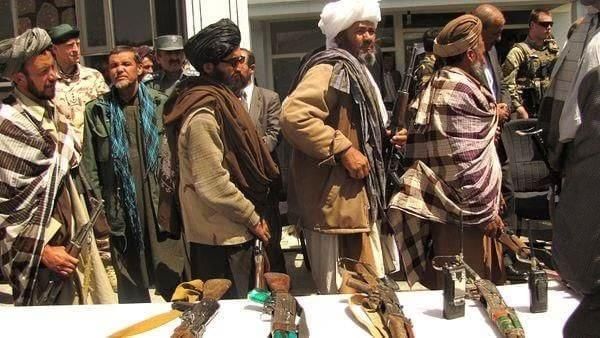 Why in News?
Why in News?
On July 3, 2025, Russia officially recognized the Islamic Emirate of Afghanistan (IEA), becoming one of the first major powers to do so since the Taliban's return to power in 2021. This significant shift in Russia's Afghanistan policy follows the accreditation of the Taliban's ambassador to Moscow and marks a departure from its previous designation of the Taliban as a terrorist organization.
Key Takeaways
- Russia acknowledges the Taliban as the de facto rulers of Afghanistan.
- Recognition aimed at counterterrorism cooperation against threats like the Islamic State-Khorasan (IS-K).
- Strategic influence in Central and South Asia is sought through this recognition.
- Legal and diplomatic frameworks have softened prior to this formal recognition.
Additional Details
- Acknowledging Ground Reality: Russia views the Taliban as the legitimate authority in Afghanistan, having maintained control over Kabul and provinces since 2021, thus being the sole entity managing internal order.
- Counterterrorism Cooperation: Russia considers the Taliban a potential ally in combatting IS-K, particularly after incidents like the Moscow concert hall attack in March 2024, which heightened security coordination with the Taliban.
- Maintaining Strategic Influence: By recognizing the Taliban, Russia aims to counteract Western influence and the rise of China, enhancing its role in regional dialogues regarding Afghanistan.
- Legal and Diplomatic Softening: The suspension of the 2003 ban on Taliban activities by Russia’s Supreme Court in April 2025 paved the way for this recognition.
Russia's recognition of the Taliban alters the regional power dynamics, potentially encouraging other nations such as Iran and China to formalize ties with the Taliban, thereby reshaping the diplomatic landscape.
Implications for Regional Players
- India – Strategic Marginalisation: Russia's recognition may diminish India's diplomatic influence in Afghanistan, where it has historically supported a democratic setup, making its previous investments less strategically valuable.
- China – Regional Leverage: With Russia's backing, China is likely to strengthen its diplomatic and economic relations with the Taliban, ensuring its interests in security and resource extraction are met.
Way Forward for India
- Pragmatic Diplomatic Channels: India should engage through back-channel discussions to protect its strategic interests, focusing on counter-terrorism and regional connectivity.
- Conditional Development Cooperation: India can offer developmental aid in sectors like health and education, contingent upon the Taliban's commitments to human rights and countering terrorism.
Understanding Russia's recognition of the Taliban is crucial for analyzing shifts in regional geopolitics, particularly its implications for Central Asian relations and the strategic maneuvers of powers like India and China.
China’s Mega Dam on Brahmaputra & Concerns in India
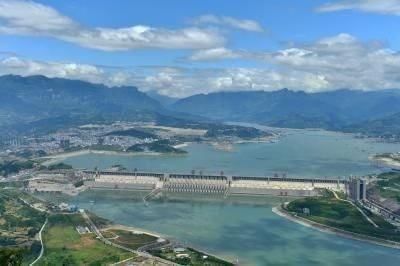 Why in News?
Why in News?
China has officially begun construction on a colossal hydropower dam on the Brahmaputra River, with an estimated cost of $167.8 billion, located near the Indian border in Arunachal Pradesh. The groundbreaking ceremony, attended by Premier Li Qiang, marks the initiation of what will become the world’s largest dam upon completion. This project has sparked significant concerns in India and Bangladesh regarding its potential effects on the river's natural flow and the availability of water downstream.
Key Takeaways
- China's dam is projected to generate 60,000 MW of power, raising alarms in India.
- Arunachal Pradesh's Chief Minister labeled the project an "existential threat" to local communities.
- India's Ministry of External Affairs has expressed concerns regarding transparency and consultations.
Additional Details
- Arunachal Pradesh's Concerns: The Chief Minister has described the dam as a potential "water bomb" that could lead to devastating floods and threaten local livelihoods. He warns that sudden water releases could inundate the Siang region and drastically reduce river flow over time.
- Environmental Risks: Experts highlight the risks of flooding associated with dam operations, especially given the seismically active region where the dam is located.
- Assam's Perspective: The Chief Minister of Assam has downplayed immediate threats, noting that the Brahmaputra only becomes a major river after entering Assam, where it is fed by tributaries and monsoon rains. He estimates that China's contribution to the river's flow is limited, about 30-35% from glacial melt and Tibetan rainfall.
- India's Diplomatic Stance: Although India has not issued a formal response to the dam's groundbreaking, it continues to monitor developments closely. The MEA has reiterated the need for transparency from China regarding its actions affecting downstream nations.
- China's Position: China asserts that the dam project falls within its sovereign rights and has committed to cooperating with downstream nations on hydrological data and disaster management.
In conclusion, the construction of the dam on the Brahmaputra has raised significant geopolitical and environmental concerns for India and Bangladesh. Continuous diplomatic efforts and scientific assessments are recommended to address potential impacts, while India pursues strategies to manage water flow and mitigate risks associated with the dam.
What the Landmark U.K.-India FTA Really Means
Why in News?
Recently, India and the U.K. formally signed a Comprehensive Economic and Trade Agreement (CETA), marking the conclusion of negotiations that commenced in January 2022. This pact, finalized after over three years of extensive discussions, aims to significantly enhance bilateral trade and strengthen economic ties between the two nations.
Key Takeaways
- The U.K. will eliminate tariffs on 99% of its product lines, impacting approximately 45% of India's current exports, including textiles, footwear, automobiles, seafood, and fresh fruits.
- India will reduce duties on 90% of its tariff lines, covering 92% of U.K. exports to India, making British goods like whisky, cars, and engineering products more affordable for Indian consumers.
Additional Details
- Trade in Goods: The agreement offers substantial tariff reductions, with high-value exports from India, such as petroleum products and pharmaceuticals, already enjoying duty-free access in the U.K.
- Trade in Services: The CETA emphasizes services, allowing U.K. companies to operate in sectors like accounting and telecommunications in India without needing a local office.
- Double Contribution Convention (DCC): This agreement allows 75,000 Indian workers on short-term assignments in the U.K. to contribute solely to India’s social security system, avoiding double payments.
- Automobile Import Duties: For the first time, India will reduce import duties on cars, with duties on large-engine luxury cars dropping from 110% to 10% over 15 years, subject to quotas.
- Government Procurement: The U.K. will gain access to about 40,000 high-value Indian government contracts, particularly in transport and renewable energy sectors.
The India-U.K. trade agreement is still pending ratification by the Cabinets of both countries, a process expected to take between six months to a year. This agreement is not only significant in its own right but could also serve as a model for future trade negotiations with other major economies like the U.S. and the European Union.
United Nations Office on Drugs and Crime
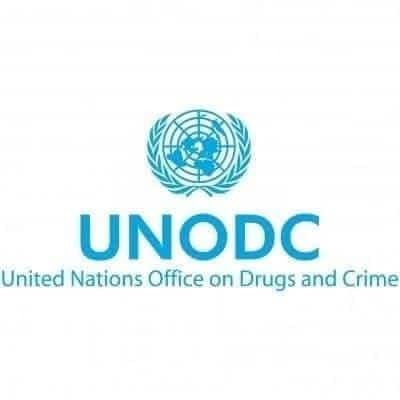 Why in News?
Why in News?
A recent report by the World Health Organization (WHO) and the United Nations Office on Drugs and Crime (UNODC) revealed that, over the past 90 years, contaminated medicines have resulted in the deaths of 1,300 individuals.
Key Takeaways
- The UNODC was established in 1997 through the merger of the United Nations Drug Control Programme and the Centre for International Crime Prevention.
- It plays a critical role in combating illicit drugs and international crime while also addressing terrorism.
Additional Details
- Functions of UNODC:
- Educates the global community about the dangers of drug abuse.
- Strengthens international cooperation against illicit drug production and trafficking.
- Improves crime prevention and assists with criminal justice reform.
- Addresses transnational organized crime and corruption.
- Terrorism Prevention Branch: In 2002, the UN General Assembly expanded its activities, focusing on assisting states in ratifying and implementing legal instruments against terrorism.
- Funding: The UNODC primarily relies on voluntary contributions from governments to fund its operations.
- Headquarters: The office is located in Vienna, Austria.
This information underscores the ongoing challenges posed by contaminated medicines and the critical work undertaken by the UNODC in various areas, including drug control and international crime prevention.
Global Specs 2030 Initiative
Why in News?
The World Health Organisation (WHO) has launched the Global Specs 2030 initiative, aimed at ensuring universal access to affordable eyecare services by the year 2030.
Key Takeaways
- The initiative focuses on improving access to refractive services.
- It aims to build the capacity of eye care personnel.
- Public awareness about eye health will be promoted.
- The initiative seeks to reduce the cost of eyeglasses and services.
- Strengthening data collection and research in eye care is a priority.
Additional Details
- Normative Work: This aspect builds on WHO’s existing technical guidance and aims to develop additional resources for eye care.
- Global SPECS Network: This network serves as a platform for organizations to engage in coordinated advocacy, share experiences, and expand their professional networks.
- Private Sector Dialogues: These discussions will involve relevant players from the optical, pharmaceutical, and technology sectors, including service providers and insurance companies.
- Regional and Country Engagement: Various activities will be conducted to accelerate progress and bridge the gap between global commitments and local implementation.
The Global Specs 2030 initiative is a comprehensive strategy that seeks to address the critical need for accessible eyecare services worldwide, ensuring that no one is left behind in accessing essential eye health solutions.
India–UK Comprehensive Economic and Trade Agreement (CETA) - A Strategic Step in Bilateral Economic Cooperation
Why in News?
This landmark agreement was signed by Prime Ministers Keir Starmer and Narendra Modi at Chequers, marking the largest UK trade deal since Brexit and India's first with a G7 economy in over a decade. Initiated in 2022, CETA reflects a significant geopolitical and commercial realignment amidst global supply chain diversification and rising protectionism.
Key Takeaways
- The CETA was a result of negotiations dating back to 2007, which faced delays due to EU demands and resumed after India's withdrawal from RCEP in 2019.
- The agreement is a crucial milestone post-Brexit for the UK and represents India's entry into a major Western market.
- CETA aligns with the India–UK Roadmap 2030, enhancing cooperation in various sectors.
Additional Details
- Economic Impacts: India will reduce tariffs on British goods from around 15% to just 3% on 90% of tariff lines, including significant cuts on Scotch whisky and high-end cars. In exchange, the UK will eliminate duties on a range of Indian exports.
- Bilateral Trade Growth: Although trade currently represents a small percentage of both nations' overall trade, projections suggest a GDP increase of approximately £4.8 billion by 2040, with potential trade expansion of up to $34 billion in five years.
- Challenges: Issues such as mobility for IT professionals and regulatory barriers in agriculture remain unresolved, alongside pending investment treaty negotiations.
- Intellectual Property Rights: Changes in India's approach towards licensing may impact public health provisions in the future.
The India–UK CETA, while modest in macroeconomic terms, signifies a pivotal shift in bilateral strategic alignment. Its success will depend on effective regulatory execution, timely ratification, and navigating rising domestic protectionist sentiments in both countries.
Henley Passport Index 2025 Overview
Why in News?
India has made significant progress in the 2025 Henley Passport Index, moving up eight places to achieve the 77th rank, a substantial improvement from its previous position at 85th last year.
Key Takeaways
- India ranks 77th in the 2025 Henley Passport Index.
- Singapore's passport is the strongest globally, allowing access to 193 destinations without a visa.
- Japan and South Korea hold second place, enabling entry to 190 destinations.
- Several EU countries share the third position, each with access to 189 destinations.
- Both the U.S. and U.K. passports have seen a decline in their rankings.
Additional Details
- Henley Passport Index: This index ranks passports based on the number of destinations that holders can access without needing a visa, using data from the International Air Transport Association (IATA). It has been in existence since 2006 and evaluates 199 passports against 227 travel destinations.
- Rankings of Major Passports:
- Singapore: 1st place, 193 destinations.
- Japan and South Korea: 2nd place, 190 destinations.
- EU passports (Denmark, Finland, France, Germany, Ireland, Italy, Spain): 3rd place, 189 destinations each.
- U.S.: 10th place, access to 182 destinations.
- U.K.: 6th place, access to 186 destinations.
In conclusion, the Henley Passport Index highlights significant shifts in global passport power, showcasing the growing influence of Asian countries while traditional powerhouses like the U.S. and U.K. experience declines in their passport rankings.
India Skills Accelerator Initiative
Why in News?
The recent announcement by the Minister of State (Independent Charge) for the Ministry of Skill Development and Entrepreneurship (MSDE) in the Rajya Sabha highlighted the launch of the India Skills Accelerator initiative, aimed at addressing skill gaps in the country.
Key Takeaways
- The initiative is a collaborative effort between the MSDE and the World Economic Forum (WEF).
- It focuses on inclusive upskilling and reskilling, promoting lifelong learning, and fostering collaboration between government and industry.
Additional Details
- Collaboration Platform: The initiative serves as a national public-private partnership platform intended to facilitate cross-sectoral efforts to tackle complex challenges through innovative solutions.
- Core Objectives:
- Enhancing awareness and shifting mindsets regarding future skills requirements.
- Encouraging collaboration and knowledge sharing among various stakeholders.
- Committing to improving institutional structures and policy frameworks to create a more adaptive skilling ecosystem.
- The initiative aims to support agile career transitions and scalable training programs, particularly in high-growth sectors such as AI, robotics, and energy, to empower India's youth and develop a workforce ready for the future.
In summary, the India Skills Accelerator initiative represents a significant step towards enhancing skill development in India, aligning educational outcomes with industry needs, and fostering a collaborative environment for sustainable workforce growth.
China Commences Construction of Mega Dam over Brahmaputra
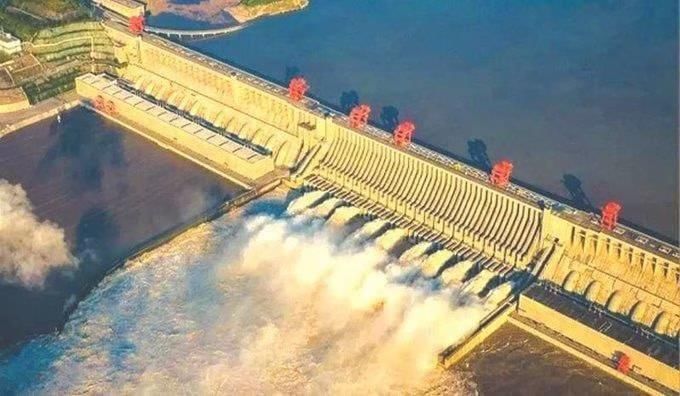 Why in News?
Why in News?
China has initiated the construction of a significant hydropower project on the Yarlung Tsangpo river, known as the Brahmaputra in India, located in southeastern Tibet.
Key Takeaways
- Location: Nyingchi, southeastern Tibet, along the Yarlung Tsangpo River.
- Project Size: Estimated investment of 1.2 trillion yuan (approximately USD 167 billion).
- Components: Includes five cascade hydropower stations.
- Power Generation: Expected to generate 300 billion kilowatt-hours (kWh) of electricity annually.
- Objective: Aims to support China's carbon neutrality target by 2060 and meet local power demands in Tibet.
Concerns
- Environmental Risks: The project poses potential threats in a seismically active and ecologically sensitive area.
- Geopolitical Tensions: Raises issues with downstream countries, particularly India and Bangladesh.
- Impact on Water Resources: Concerns regarding alterations in river flow and water availability downstream.
- Strategic Significance: The dam's proximity to the India-China border heightens anxieties amid ongoing border disputes.
What if China Stops Brahmaputra Water?
Understanding the implications of China's control over the Brahmaputra River is crucial. For context, consider:
- Three Gorges Dam: Located on the Yangtze River in Hubei province, China.
- Completion: Fully operational since 2012.
- Type: A hydroelectric gravity dam, recognized as the world's largest power station by installed capacity.
- Power Generation Capacity: Approximately 22.5 gigawatts (GW).
- Notable Impact: Contributed to flood control, navigation, and electricity supply but has faced criticism for ecological damage, displacing over 1 million people, and increasing seismic risk.
The Brahmaputra, Irrawaddy, and Mekong rivers originate in Tibet and traverse narrow mountain ranges in their upper courses. Notably, the Brahmaputra makes a unique “U” turn to flow into India due to:
- (a) Uplift of folded Himalayan series
- (b) Syntaxial bending of geologically young Himalayas
- (c) Geo-tectonic disturbance in the tertiary folded mountain chains
- (d) Both (A) and (B) above
This ongoing project highlights not only the infrastructural ambitions of China but also the broader geopolitical dynamics in South Asia.
US Withdraws from UNESCO
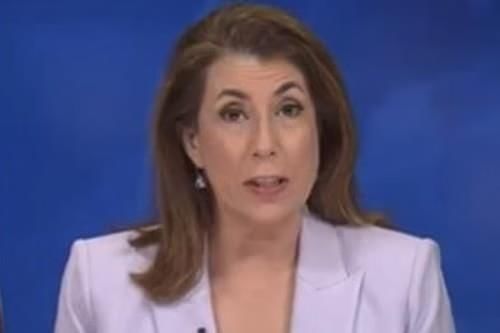 Why in News?
Why in News?
The United States has officially withdrawn from the United Nations Educational, Scientific and Cultural Organization (UNESCO) for the third time, citing perceived bias against Israel as the primary reason for its departure.
Key Takeaways
- The withdrawal marks the third instance of the US exiting UNESCO.
- UNESCO was established in 1945 and has 194 member states.
- India has been a member of UNESCO since 1946.
Additional Details
- About UNESCO: UNESCO promotes peace, poverty eradication, sustainable development, and cultural diversity through global cooperation.
- Key Functions:
- Ensures inclusive and quality learning for all.
- Fosters international scientific collaboration.
- Promotes ethics, social justice, and human rights.
- Preserves cultural heritage and promotes creative diversity.
- Defends freedom of expression and ensures universal access to knowledge.
- Key Initiatives and Contributions:
- World Heritage Program: Protects sites of cultural and natural value.
- Major Conventions: Includes the Convention on Cultural and Natural Heritage, among others.
- Flagship Reports: Such as the Global Education Monitoring Report and the United Nations World Water Development Report.
- UNESCO and Sustainable Development Goals: UNESCO actively supports various Sustainable Development Goals (SDGs) with an emphasis on education, gender equality, environmental sustainability, and peace.
In conclusion, the US's repeated withdrawal from UNESCO highlights ongoing tensions in international relations, particularly regarding issues related to Israel and Palestine, while UNESCO continues to play a critical role in global educational and cultural initiatives.
Universities Everywhere Are in Crisis
Why in News?
In recent years, universities have faced significant challenges, becoming targets of political and economic pressures that threaten their autonomy and ability to foster open debate. A notable example is the attack on Harvard University's federal funding in July 2024, representing a broader trend where right-wing governments globally are attempting to exert ideological control over higher education.
Key Takeaways
- Universities are increasingly under siege from political and economic forces, undermining their independence.
- Notable cases illustrate how funding and policies are weaponized to impose ideological conformity.
Additional Details
- United States: Elite institutions like Harvard and Columbia are accused of promoting anti-American sentiment. The Trump administration's policies, including visa restrictions for international students and threats to defund universities, have highlighted the fragility of academic freedom.
- Australia: The government has vetoed humanities research deemed contrary to national interests, resulting in self-censorship among scholars on sensitive topics like politics and climate change.
- Global Patterns: Countries like India and Hungary illustrate how political populism suppresses academic freedom. Universities face punitive actions for challenging government narratives.
- Neoliberal Changes: The transformation of universities into corporate entities has prioritized market metrics over critical inquiry, diminishing the relevance of humanities and social sciences.
The ongoing crisis in academia is driven by both ideological and economic factors, posing a threat to the intellectual independence necessary for addressing global challenges. Defending academic freedom is essential not only for the integrity of educational institutions but also for the health of democratic societies.
China, India, and the Conflict Over Buddhism
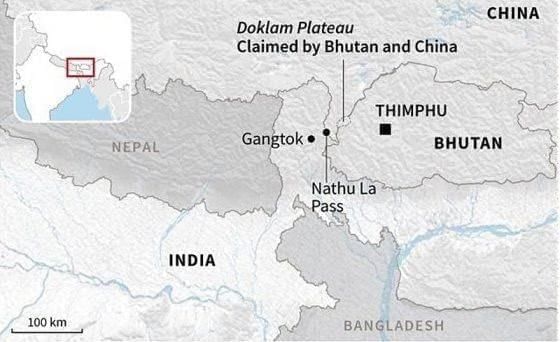 Why in News?
Why in News?
As international focus centers on China's naval expansion in the Indo-Pacific and India's strategic responses, a significant but quieter contest is emerging in the Himalayas. This conflict revolves around the spiritual and cultural influence of Himalayan Buddhism, transforming a tradition of peace into a geopolitical battleground.
Key Takeaways
- The geopolitical struggle between India and China is deeply intertwined with the influence of Buddhism.
- China employs Buddhism as a tool of statecraft, while India's response has been slower and more fragmented.
- The succession crisis of the Dalai Lama could create a schism in Tibetan Buddhism, impacting regional loyalties.
Additional Details
- Buddhism as a Tool of Statecraft: China has aggressively sought to control Tibetan religious life since the 1950s, marginalizing independent lamas and asserting authority over reincarnation processes. In 2007, state approval became mandatory for all Living Buddhas, placing spiritual legitimacy under political control.
- India's Buddhist Diplomacy: While India has hosted the Dalai Lama since 1959, it has only recently begun to promote its Buddhist heritage actively. Efforts include investing in pilgrimage circuits, but these initiatives still lag behind China's well-coordinated strategies.
- The Dalai Lama Succession Crisis: The current Dalai Lama has expressed intentions to reincarnate outside Chinese control, likely in India. This could lead to two competing figures recognized by different communities, potentially dividing Tibetan Buddhism and influencing geopolitical allegiances.
- Cultural Influence of China: China is expanding its influence through cultural narratives and investments in Buddhist infrastructure, asserting territorial claims in regions like Arunachal Pradesh and Nepal, where it argues for historical and spiritual legitimacy.
The ongoing conflict over Himalayan Buddhism reveals that geopolitics extends beyond territory and military strength. As India and China vie for regional dominance, the future of Asia may hinge not only on strategic deterrence but also on spiritual succession. The Himalayas, often viewed as a remote frontier, are becoming a critical arena where religion and realpolitik intersect.
At FTA’s Heart, The Promise of Global Capacity Centres
Why in News?
The Free Trade Agreement (FTA) between the United Kingdom and India is set to become a pivotal development in international trade, particularly for its economic importance and potential to transform the services sector.
Key Takeaways
- The rise of Global Capability Centres (GCCs) represents a strategic opportunity for collaboration between India and the U.K.
- India serves as a global hub for GCCs, housing over 1,500 centres that employ approximately two million professionals.
- The FTA can help harmonize trade policies and enhance cross-border collaboration.
Additional Details
- Global Capability Centres (GCCs): GCCs in India have transitioned from cost-effective back offices to innovation hubs for multinational corporations, providing services in various fields including research and development, analytics, and cybersecurity.
- The U.K. seeks to tap into India's growing digital economy and talent pool, using the FTA to enhance its global services and innovation footprint post-Brexit.
- Policy and Regulation: The FTA aims to address challenges such as double taxation and misaligned digital governance standards that hinder GCC operations. A well-structured agreement can enhance intellectual property protection and facilitate cross-border digital trade.
- India's proactive initiatives, despite the absence of a formal national GCC policy, have created a conducive ecosystem for GCCs, supported by collaborations between the government and industry stakeholders.
- The ongoing diplomatic engagements between the U.K. and India signal a commitment to strengthening bilateral trade ties, with both nations aiming to establish a knowledge corridor focused on services, digital trade, and talent mobility.
In conclusion, the forthcoming U.K.-India Free Trade Agreement presents a historic chance to redefine bilateral trade by emphasizing services, innovation, and human capital, which are essential for the success of Global Capability Centres. This partnership has the potential to foster foreign investment, develop talent, and drive digital transformation in both countries, ultimately creating a resilient knowledge-driven corridor for international cooperation.
India Can Reframe the Artificial Intelligence Debate
 Why in News?
Why in News?
The rapid rise of artificial intelligence (AI), marked by the introduction of platforms like ChatGPT, has transformed AI from a niche research area into a significant global topic. As leaders respond to the implications of AI, global summits have emerged to discuss its governance. With the upcoming AI Impact Summit in New Delhi in February 2026, India has a unique opportunity to play a pivotal role in shaping the international AI landscape.
Key Takeaways
- India's strategic position allows it to bridge diverse geopolitical interests in AI governance.
- India's democratic approach to AI consultation invites broad participation from various sectors.
- Proposed initiatives aim to enhance accountability, representation, and safety in AI development.
Additional Details
- Fractured Geopolitical Landscape: The Paris AI Summit in February 2025 ended in discord, highlighting divisions among nations like the US, UK, and China. India can mitigate these tensions by promoting inclusivity in AI governance.
- Democratic Approach: India's Ministry of Electronics and Information Technology launched a nationwide consultation to gather input from students, researchers, and civil society, focusing on inclusive growth, development acceleration, and environmental protection.
- Pledges and Accountability: The summit can encourage countries to make measurable commitments, such as improving energy efficiency in data centers and expanding AI educational programs in rural areas.
- Elevating the Global South: India aims to ensure equitable representation for the Global South, proposing initiatives like the AI for Billions Fund to support underserved communities.
- Safety Standards: India could lead the creation of a Global AI Safety Collaborative to develop shared safety benchmarks and evaluation tools.
- Balanced Regulation: India may propose a voluntary code of conduct for AI that promotes accountability while allowing innovation to thrive.
- Preventing Fragmentation: Ensuring a broad and inclusive summit agenda can help prevent geopolitical divisions from splintering the AI ecosystem.
In conclusion, the AI Impact Summit of 2026 offers India a significant diplomatic and technological opportunity. By fostering transparency, inclusivity, shared safety standards, and a commitment to equitable governance, India can emerge as a leader in the global AI dialogue, reinforcing its role as a bridge-builder in an increasingly divided world.
India-EU FTA - Progress on Digital Trade, Services & Investment Texts
Why in News?
India and the European Union (EU) have made significant progress in the 12th round of Free Trade Agreement (FTA) negotiations. Notably, the digital trade chapter has been finalized in principle, and substantial advancements have been achieved in the services and investment chapters. These developments are essential for finalizing the India-EU FTA, which is anticipated to be a pivotal moment for global trade, cross-border data governance, and bilateral economic relations.
Key Takeaways
- The digital trade chapter is a milestone development, covering crucial aspects like cross-border data flows.
- India's IT and digital economy stand to benefit significantly from these negotiations.
- EU aims to eliminate discriminatory obstacles for its service providers in India.
- India's position on data localization remains firm, prioritizing policy space and sovereignty.
- Advancements in investment text and dispute resolution mechanisms signal a potential shift in trade relations.
Additional Details
- Digital Trade Chapter: This chapter addresses cross-border data flows, which are essential for e-commerce and digital services. It represents a key enabler for India's growing IT and digital economy to integrate with the global services ecosystem.
- Services Sector Progress: The EU's objective is to remove "discriminatory and disproportionate obstacles" faced by its service providers. India's rapidly expanding IT and financial services sectors are poised to gain from increased EU investment.
- Cross-Border Data Flow: In the context of AI and the Fourth Industrial Revolution, India is resistant to modifying its data localization norms, emphasizing the importance of privacy and cyber sovereignty. India's stance has been consistent, as seen in the RBI's 2018 norms mandating local storage of payment data.
- Investment and Dispute Settlement Mechanism: Progress has been reported in investment texts and dispute resolution mechanisms, with a focus on state-to-state mediation. However, EU concerns linger due to India's previous termination of Bilateral Investment Treaties (BITs).
The recent advancements in the India-EU FTA negotiations highlight the importance of digital trade and investment. By striving for a balance between economic integration and regulatory sovereignty, India aims to unlock growth opportunities while safeguarding its national interests. This delicate equilibrium aligns with India's broader trade and digital strategy in an evolving global context.
Pact for Future: India's Commitment
Why in News?
India has reaffirmed its strong support for the Pact for the Future and its essential components, the Global Digital Compact and the Declaration on Future Generations, during the third informal dialogue aimed at reviewing this significant international agreement.
Key Takeaways
- The Pact for the Future is a comprehensive international agreement addressing new areas that have remained unresolved for decades.
- Its primary aim is to enhance global collaboration and expedite progress towards the Sustainable Development Goals (SDGs).
- The Pact addresses a wide array of issues including peace and security, climate change, and digital cooperation.
Additional Details
- Global Digital Compact: This component of the Pact promotes international standards and norms in the digital space, ensuring equitable access and benefits of digital technologies.
- Declaration on Future Generations: Aims to safeguard the rights and needs of future generations, ensuring sustainable practices today.
- The Pact was officially adopted at the Summit of the Future in New York in September 2024, reflecting a collective commitment to an international system centered around the United Nations.
In conclusion, the adoption of the Pact for the Future symbolizes a unified effort among countries to adapt international frameworks to contemporary challenges, ensuring that global governance can effectively respond to the evolving landscape of international relations.
Designation of The Resistance Front by the United States Department of State
Why in News?
The United States has officially designated The Resistance Front (TRF) as a Foreign Terrorist Organization (FTO) and a Specially Designated Global Terrorist (SDGT). This designation comes in response to TRF's claimed responsibility for the Pahalgam attack in South Kashmir on April 22, which resulted in the deaths of 26 individuals. This measure aims to globally isolate the group by freezing its assets and limiting its international operations.
Key Takeaways
- The Resistance Front (TRF) is linked to the Pakistan-based Lashkar-e-Taiba (LeT).
- TRF was formed following the abrogation of Article 370 in August 2019.
- The group claims to be an "indigenous resistance group" operating in Jammu and Kashmir.
- Its leadership includes Sheikh Sajjad Gul as the current chief and Ahmad Khalid as spokesperson.
Additional Details
- Links to LeT: TRF operates under the guidance of Pakistan's army and ISI, using rebranding to evade scrutiny from international bodies.
- Modus Operandi:The group has conducted various significant attacks, including:
- April 2025 Pahalgam attack (26 killed)
- October 2024 Ganderbal killings (7 civilians killed)
- June 2024 bus attack in Reasi
- 2020 attack in Lal Chowk, Srinagar (6 fatalities)
- Digital Warfare and Propaganda: TRF operates a digital propaganda outlet, KashmirFight, which disseminates separatist narratives and claims of responsibility for attacks.
- India officially banned TRF under the Unlawful Activities Prevention Act (UAPA), 1967, acknowledging it as a serious threat to national security.
- The Ministry of External Affairs has emphasized TRF's connections to other Pakistan-based terror groups.
- In its reports to the UN's 1267 Sanctions Committee, India provided insights into TRF's operations and affiliations.
The United States' designation of TRF as a terrorist organization is a significant step in curbing its operations and financial support, making it illegal for US individuals or entities to provide material support to the group. The designation also allows for asset freezes and restrictions on financial transactions, with the aim of weakening the group's global influence.
Disputes over Grand Ethiopian Renaissance Dam (GERD)
Why in News?
The completion of Ethiopia’s Grand Ethiopian Renaissance Dam (GERD) has reignited tensions over Nile water rights, particularly with Egypt and Sudan, who are concerned about reduced water flows.
Key Takeaways
- The GERD is a gravity dam located on the Blue Nile near the Ethiopia-Sudan border.
- Construction began in 2011, led by the Ethiopian Electric Power Corporation.
- Once completed, it will be Africa's largest hydropower plant with a capacity of 6.45 GW.
- The reservoir can hold 74 billion cubic meters of water, with filling expected to take 5 to 15 years.
Additional Details
- Key Features: The dam is 145 meters tall and includes 16 turbines along with a supporting saddle dam.
- Purpose: The GERD aims to provide electricity to Ethiopia, where approximately 65% of the population lacks access to power, and to export surplus energy to neighboring countries.
- Egypt’s Concern: Egypt fears reduced water flow, as it relies on the Nile for 90% of its water supply, and is demanding a binding agreement on the dam's filling.
- Sudan’s Worry: Sudan expresses concerns regarding potential flood risks and the need for proper regulation of water flow.
- Ethiopia’s Stand: Ethiopia asserts its sovereign rights and has begun filling the dam without reaching a consensus with Egypt and Sudan.
- Stalled Talks: Tripartite negotiations among Ethiopia, Egypt, and Sudan have not yielded results, leading Egypt to warn of potential conflict.
The Grand Ethiopian Renaissance Dam represents a significant point of contention among the Nile Basin countries, highlighting the complexities of water rights and the necessity of cooperative agreements in managing shared water resources.
India Calls Out Global Bias on Russian Oil Trade
Why in News?
India has firmly rejected concerns regarding potential U.S. sanctions impacting its trade of Russian oil. Petroleum Minister Hardeep Singh Puri highlighted India's broad array of oil imports from 27 to 40 different countries and assured that India would manage any arising challenges. Concurrently, the Ministry of External Affairs (MEA) criticized the "double standards" in international relations, asserting that India's priority is to secure affordable energy based on market availability.
Key Takeaways
- India is diversifying its oil imports amidst potential U.S. sanctions on Russian oil trades.
- The U.S. is considering imposing secondary sanctions on countries, including India, that continue to engage in trade with Russia.
- Concerns arise over a proposed 50-day deadline by U.S. President Donald Trump for Russia to cease its military actions in Ukraine.
Additional Details
- U.S. Sanctions: The U.S. is signaling stricter measures against nations trading with Russia, which could adversely affect India. The potential sanctions could include penalties on key trading partners like India, China, and Brazil.
- Trade Growth: India’s trade with Russia has surged to a record $68.7 billion in FY 2024–25, significantly increased from pre-pandemic levels, with major imports including crude oil and fertilizers.
- In May 2025, India imported crude oil worth $4.42 billion from Russia, raising concerns about dependence on Russian energy amidst sanctions.
- India maintains that it has diversified its oil sources and can shift suppliers if needed, showing skepticism about the likelihood of harsh sanctions being imposed.
- China, as Russia's largest trade partner, complicates the U.S. stance as escalating tensions with Beijing could deter aggressive action against India.
In conclusion, while India remains committed to ensuring energy security for its population, the geopolitical landscape surrounding Russian oil trade continues to evolve, prompting mixed reactions from Western nations regarding proposed sanctions.
The U.S. Established and Extinguished Multilateralism
 Why in News?
Why in News?
The shift of the United States towards unilateralism, particularly under Donald Trump, marks a significant transformation in global politics. This change has led to sidelining multilateral institutions like the United Nations and has weakened the collective power of the Global South.
Key Takeaways
- The U.S. is prioritizing national self-sufficiency and bilateral agreements over multilateral cooperation.
- India has an opportunity to assert its influence by focusing on national prosperity and South-South cooperation.
- The upcoming BRICS Summit in 2026 in India aims to realign the Global South's priorities.
Additional Details
- Unilateralism: The U.S. has increasingly used unilateral tariffs as tools for negotiation, sidelining efforts to build global consensus.
- India's Strategic Autonomy: India must balance its relations with major powers while standing firm on its core interests, especially in the context of recent diplomatic setbacks.
- Trade Focus: India's trade strategies should shift towards the East, particularly with ASEAN, to mitigate the impact of reduced exports to the U.S.
- Fourth Industrial Revolution: India is emerging as a leader in generative AI, showcasing its innovation potential and self-driven growth.
- Military Modernization: India is adapting its military strategies to focus on advanced technologies, enhancing its global leadership in defense.
- Diplomatic Engagement: India is rethinking its approach to historical border disputes, recognizing that long-term solutions require diplomatic efforts.
In conclusion, as multilateralism fades, India must navigate its path strategically, leveraging its strengths in economics, technology, and diplomacy to assert its role in the evolving global landscape.
India’s Strategic Focus on West Africa
Why in News?
Despite the growing influence of China in financing and infrastructure development in West Africa, India remains a key partner for Nigeria, the largest economy and democracy on the continent. This ongoing relationship underlines India's strategic objectives in the region.
Key Takeaways
- Strengthening bilateral relations with Nigeria.
- Enhancing security cooperation to combat terrorism and piracy.
- Establishing development partnerships through loans and capacity-building.
- Promoting common goals within the Global South framework.
Additional Details
- Strengthening Bilateral Relations: India seeks to enhance its strategic partnership with Nigeria, influencing broader regional dynamics in West Africa.
- Focus on Security Cooperation: India aims to bolster security collaboration, particularly against threats like Boko Haram.
- Development Partnerships: By providing concessional loans, India positions itself as a supportive partner in Nigeria's socio-economic growth.
- Economic Ties Enhancement: India plans to revitalize trade with Nigeria through agreements like the Economic Cooperation Agreement (ECA) and the Bilateral Investment Treaty (BIT).
- Cultural Exchanges: By promoting people-to-people interactions, India aims to foster goodwill and mutual understanding between the nations.
Challenges Faced by India
- Geopolitical Competition: China's dominance in various sectors in Nigeria poses challenges for India’s aspirations.
- Economic Fluctuations: A decline in trade from $14.95 billion in 2021-22 to $7.89 billion in 2023-24 due to global market changes.
- Political Instability: An unpredictable political landscape in Nigeria can hinder long-term investments.
- Capacity Constraints: Local capacity issues may affect the effectiveness of India's developmental initiatives.
Way Forward
- Deepen Strategic Collaboration: Strengthen partnerships in defense and security, and diversify trade in key sectors.
- Focus on Regional Capacity Building: Tailor developmental assistance to local needs while supporting Nigeria's stability through diplomatic engagement.
These strategies aim to not only enhance India's influence in West Africa but also ensure mutual growth in the region amidst existing challenges.
The Importance of India and Europe Walking in Step
Why in News?
In a world marked by geopolitical uncertainty and shifting alliances, the relationship between India and Europe emerges as a vital strategic partnership. This collaboration, grounded in historical ties, is increasingly relevant in navigating contemporary global challenges.
Key Takeaways
- The India-Europe partnership is evolving from historical aloofness to proactive engagement.
- Both regions are committed to promoting a multipolar global order based on shared values.
- Economic synergies are evident with a significant increase in EU investments in India.
- Collaborative efforts in technology, defense, and governance highlight mutual interests and strengths.
Additional Details
- Historical Context: Traditionally, India and Europe have been marginal in each other's strategic considerations. Recent diplomatic efforts reflect a shift towards more active collaboration, driven by global changes.
- Strategic Autonomy: European nations are reassessing their foreign policies, especially post-Trump, leading to a focus on strengthening ties with India.
- Economic Cooperation: EU foreign direct investment in India has surged, with a remarkable increase of 70% from 2015 to 2022, underscoring India's growing economic significance.
- Digital Collaboration: India's expertise in digital innovation complements Europe’s capabilities in deep tech and manufacturing.
- Defense and Security: Both regions are focusing on co-development and technology transfer in defense, addressing shared security challenges, including terrorism and maritime security.
- Global Governance: India and Europe share a commitment to upholding a rules-based international order, advocating for equitable frameworks that benefit the Global South.
- Cultural Exchange: Enhanced cultural diplomacy is essential for fostering a deeper understanding and appreciation of each other’s aspirations and challenges.
The India-Europe relationship has transitioned from a mere possibility to a crucial necessity for both regions, contributing significantly to global stability. By embracing a future-oriented vision and moving beyond historical constraints, India and Europe can establish a powerful model of collaboration that benefits not just themselves but also the broader international community.
|
164 videos|798 docs|1153 tests
|
FAQs on International Relations (Part 1): July 2025 Current Affairs - General Test Preparation for CUET UG - CUET Commerce
| 1. What is a Schengen Visa and which countries does it cover? |  |
| 2. What are the strategic implications of the Yarlung Tsangpo Project for India? |  |
| 3. How does Russia's involvement with the Taliban affect its international relations? |  |
| 4. What are the ecological concerns regarding China's mega dam on the Brahmaputra? |  |
| 5. What are the key components of the India-UK Comprehensive Economic and Trade Agreement (CETA)? |  |
















